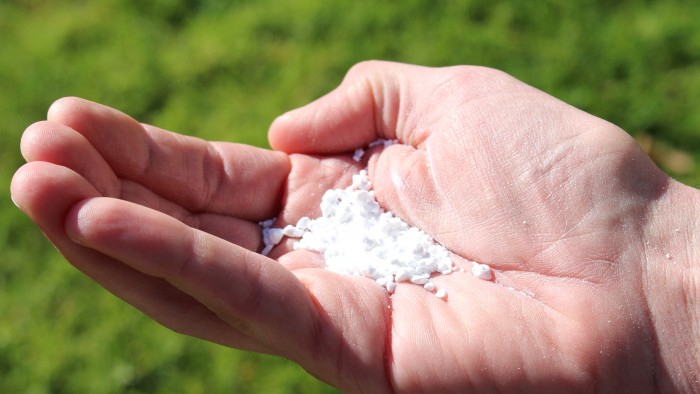 Natural Sciences
Natural Sciences
Chemical Twofer

One gram of a material being used by chemist Darren Johnson for water filtration has the same surface area as the football field in Autzen Stadium.
Darren Johnson doesn’t want to “get the lead out.” But he does want to get the neodymium and ytterbium out.
Yes, those are real things. They’re among the so-called rare earth elements, metals that often get leached from underground minerals and brought to the surface in briny, hot, underground water that’s increasingly being tapped to generate electricity in geothermal energy plants. Often toxic, the metals need to be removed before the water can be used and then discharged into a river.
Johnson, a professor in the UO’s Department of Chemistry and Biochemistry and the Materials Science Institute, is working on a new, ultraporous filter material that not only would strip these metals out of the water but also allow them to be recovered and used. The result would be a chemical twofer: clean water and a new source of valuable metals.
“Essentially, what we want to do is mine the water,” Johnson said.
Johnson and his lab team are working with Pacific Northwest National Laboratory, a unit of the US Department of Energy, to develop the filter material that would be packed into a pipe or similar container to create a filter. Kara Nell, a doctoral student in Johnson’s lab, is helping lead the UO side of the project.
One of the keys to the filter is a newly developed, silica-based material that is engineered with billions of microscopic pores. With the right chemical treatment, those pores can be “programmed” to grab onto the metals and let the water pass through.
Then it’s just a matter of stripping away the filter material, and voilá, ready-made rare earth metals.
(Rare earth elements really aren’t rare, but people thought they were when they were first discovered. It turns out they’re just good at hiding inside different minerals, which makes them difficult and expensive to get at.)
The filter material—a simple white powder similar to chalk or talcum—is pretty amazing stuff by itself. With all those billions of divots, the surface area of the material is vastly increased, in the same way that a meandering line is longer than a straight line even if they both start and end at the same place.
“If you have one gram of this material, which easily fits in the palm of your hand, the surface area of that gram of material is the same as the surface area of the entire football field in Autzen Stadium,” Johnson said.
Johnson and his lab team are now working on fine-tuning the chemical coating that makes the pores in the filter material a trap for metals. They have one that works, but it’s not so easy to separate the metals from the filter material afterward.
That’s a key issue. The effort will be for naught if these potentially dangerous substances can’t be removed and put to good use.
“We’ve shot ourselves in the foot if the material ends up in a landfill,” Johnson said. “Rare earths have a really useful value.”
With tongue-twisting names like “praseodymium” and “lutetium,” rare earths are kind of second-class citizens on the periodic table of elements, shunted off to those two separate rows at the bottom of the chart. But they’re essential to the design and production of everything from sunglass lenses to electronics to high-tech lasers.
What’s more, if the filter material is developed for large-scale commercial use, its price would come down to the point it could be used as a cheap alternative in home water filters or portable units for recreation or military use. And that would open the door for uses in developing countries that need an economical way to treat contaminated water to make it safe for human use.
Tests already have shown the material works well using both Columbia River water and seawater, although it does not remove salt, only metals. It still needs to be tested on geothermal water, but Johnson said that, barring any surprises, he’s confident it will work there as well.
”Since we know this can extract metals from seawater, I think we’re golden,” Johnson said.
―Greg Bolt
Photo: Greg Bolt


 Twitter
Twitter Facebook
Facebook Forward
Forward